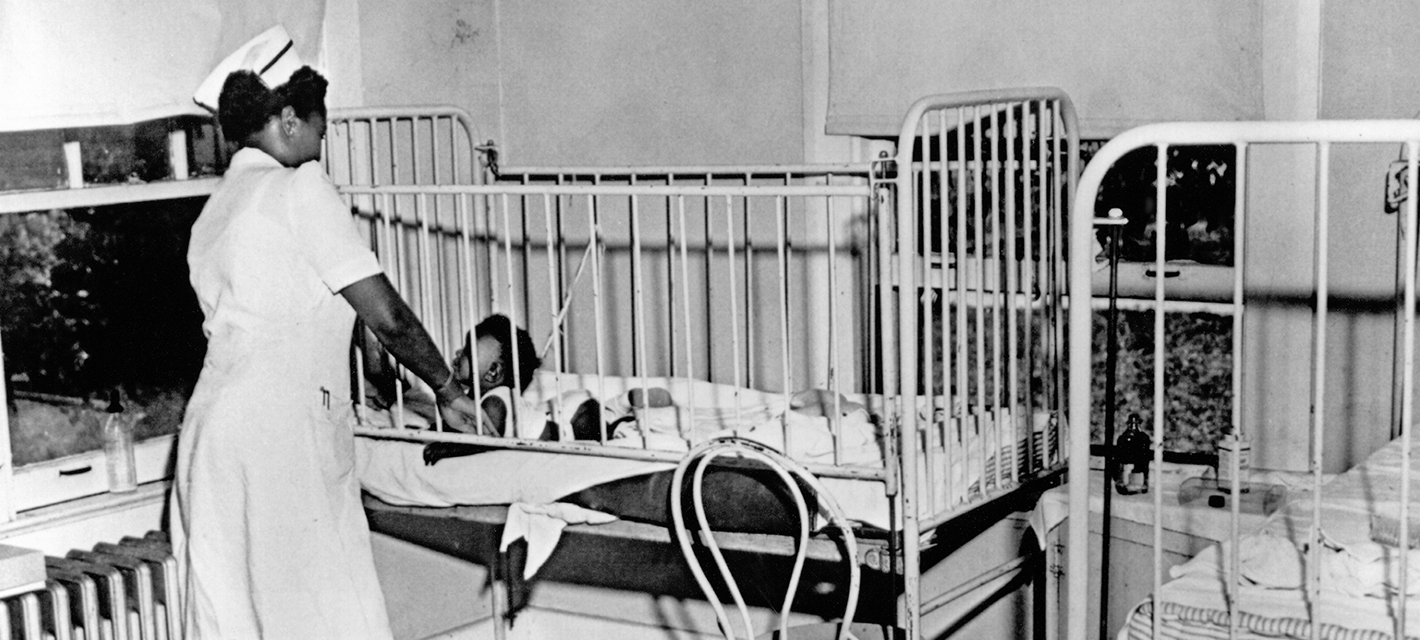Pioneering Black Medical Care Despite Insufficient Resources
Segregated healthcare meant that for decades, there were no hospitals or doctors in St. Petersburg that would treat Black patients. Because of this, midwives, nurses, and volunteers were an important means of healthcare for Black residents, providing them with maternity services and general medical care well into the twentieth century.

Mercy Hospital pediatric ward
In 1923, Mercy Hospital opened its doors in South St. Pete to serve the Black community. They hired a Black staff physician and for nearly 40 years they were the only hospital in the city that treated and cared for Black people in St. Pete. Healthcare workers at Mercy Hospital provided quality care to the Black community despite having no pharmacy or laboratory and facing challenges with equipment and overcrowding.
Integrating Mound Park Hospital
In 1961, the decision was made to integrate the Mound Park Hospital, which up until that point had been designated for White people only. When Mercy Hospital closed in 1966, its doctors and patients were transferred to Mound Park. Although the transition was not easy, integrating Mound Park Hospital was an important first step towards racial and health equity.
Challenges to Health Equity Today
Despite the progress and integration of the healthcare industry, racist ideas and biases persit in the medical field today, translating to poorer health outcomes for Black, Indigenous, and other people of color.
